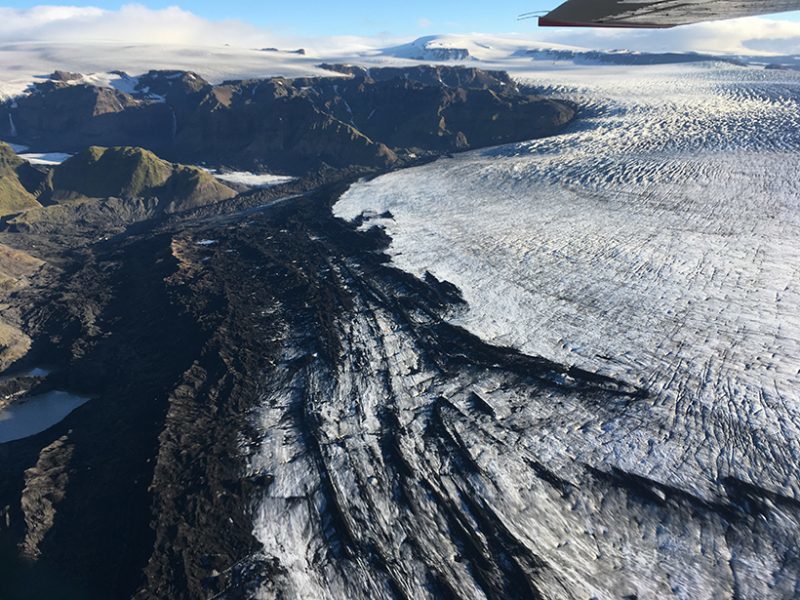
The emission rate of carbon dioxide (CO2) is one of the less obvious-but nevertheless significant-measures of volcanic activity. Volcanic CO2 emissions are also important for understanding the preindustrial climate balance. To date, estimates of global volcanic CO2 emissions have been extrapolated primarily from measurements collected at a small number of active sources. Ice-covered volcanic centers are prevalent, but they are often difficult to access, and their vents are difficult to discern, so they are rarely included in these calculations.
To address this gap, Ilyinskaya et al. recorded the first atmospheric gas emission rate measurements from Katla, one of Iceland's largest active volcanoes. This massive ice-covered caldera, which last erupted a century ago, was previously assumed to be a relatively minor emitter of CO2, but the new results suggest otherwise.
The team detected CO2 emitted by Katla by analyzing airborne gas emission measurements made in October 2016 and October 2017. These observations were combined with gas dispersion modeling to calculate the volcano's total emissions. The results indicate that Katla emits 12-24 kilotons of CO2 per day, which is more than double previous estimates of the emission rate of CO2 from all volcanic and geothermal sources in Iceland combined (2.7-5.8 kilotons per day). Although the large CO2 emission rate may suggest the presence of magma in the roots of Katla volcano, regular monitoring is needed to establish whether there is a link between the CO2 emission and any future eruptions.
These findings suggest that subglacial volcanoes-the emissions of which have not been considered in much detail, historically-may be major emitters of carbon dioxide. Because of this, their contributions to the global volcanic CO2 budget may have been underestimated. Future work will determine whether Katla is representative of other ice-covered volcanoes. (Geophysical Research Letters, https://doi.org/10.1029/2018GL079096, 2018)
Citation: Cook, T. (2018), Volcano in Iceland is one of the largest sources of volcanic CO2, Eos, 99, https://doi.org/10.1029/2018EO109123. Published on 08 November 2018. Text © 2018. The authors. CC BY-NC-ND 3.0
Except where otherwise noted, images are subject to copyright. Any reuse without express permission from the copyright owner is prohibited.
Source: Geophysical Research Letters



Comment: While it's clear that much greater forces are driving our planet's climate, it's notable what global warmists fail to include in their obviously erroneous models.
See:
- Volcanic eruptions, rising CO2, boiling oceans, and why man-made global warming is not even wrong
- Professor Valentina Zharkova explains and confirms why a "Super" Grand Solar Minimum is upon us
- Greenland getting colder says 15 years of data but global warmists 'fill in the gaps' to convince themselves otherwise
And check out SOTT radio's: Behind the Headlines: Earth changes in an electric universe: Is climate change really man-made?